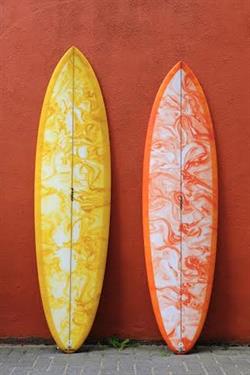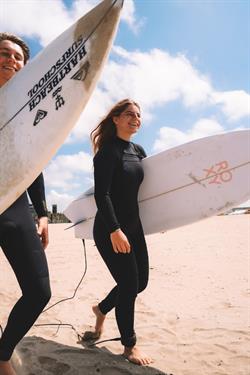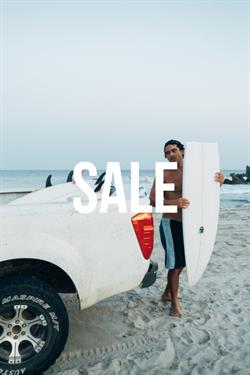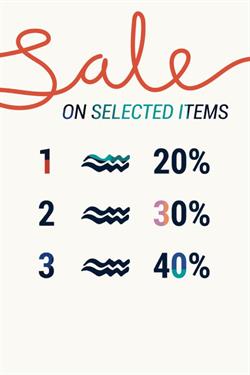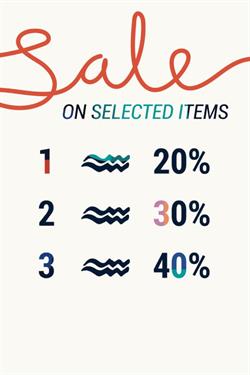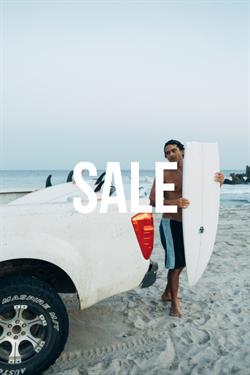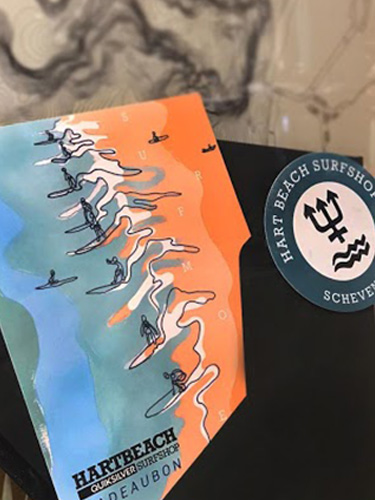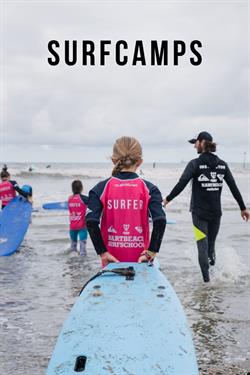It's one of the most important inventions in surfing: the surf leash. But how do they actually work and how do you choose what to buy?
Shop Leashes
It’s one of the most important and handy inventions within surfing: the Leash. It came on the scene since the 70s and it's the brainchild of Pat O’Neill (yes, this is the son of Jack O’Neill, the inventor of the wetsuit and from the famous surf brand).
The invention has been saving people hundreds of laps to the beach and back to pick up their board, as well as saving lives and people from harm. That’s also why they are mandatory on a lot of beaches.
It felt like as good a moment as any to tell you about leashes, what the different options are and what to think about when buying one.
We are going to begin by diving into how a Leash is built. After that we will ask you three more questions that will aid you in choosing the right one for you!
Go to our full collection of leashes
here.
Parts of a leash

The Cuff
This is the part that wraps around your ankle, so it’s convenient if it’s nice and comfy. It (most of the time) consists of layers of neoprene and velcro and the more expensive the leash, the better this is finished. For example: the padding is more comfortable or thick or there is silicone grip on the inside to prevent sliding around on your ankle. There are also different widths: If you need more strength (for example in bigger waves) it's better to have a more wide one. Key pockets have been implemented into some cuffs also.
The Swivel
The swivel is the part that attaches the cuff to the cord .Some leashes have a swivel feature at their attachment point to the cuff that allows the leash to spin and twist without the rider, preventing tangles that can trip up your feet. It is up to you to decide whether you prefer a one or two bearing swivel, or none at all.
The Cord
Most leash cords are made out of polyurethane (the same material skateboarding wheels are made out of). These days there are some alternatives like the FCS Freedom Leash, that is made out of braided nylon. The thickness has consequences for your surfing, and is discussed later on.
There are also coiled leashes available, but these are mainly used in bodyboarding and stand-up-paddle boarding.
The Rail Saver
The railsaver is the fabric part at the other end of the cord, closest to your board. The name of the part says everything about it’s function: saving your board. Waves have a lot of power, and when a thin cord is pulled against the rail of your board, it can be pulled through and damage your board.
Leash rope
The leash rope attaches your leash to your board. make sure this thin rope is not long enough to go over your rail, because that is where your rail saver should be.
What length leash do I need?
Since boards and surfers come in different sizes, so do leashes. It would be weird to use the same leash for a 4’ for a grom board, and a 12’ SUP (and vice versa).
The length of leash that is right for you will depend on the length of your board and your ability level.
Because the leash is dragged behind your board (this is called ‘leash drag’), you want as little rope as possible. It still shouldn't be too short also, because you don't want your board too close to you during a heavy wipeout (because your board can also hurt you). That’s why we use the following rule of thumb: A leash should be equal in length to or slightly longer than the board it will be used on.
So if your board is in between feet (like for example 7’8), round up to the closest whole feet and go for that (in this case a 8’ leash).
Here are our leashes up to 6’
Here are the 6’ up to 7’ leashes
Here are the 7’up to 8’ leashes
Here are the 8’ up to 9’ leashes
What thickness do I need?
The thicker the leash is, the greater the drag. For surfing small waves or competition surfing, it's sensible to get a thinner leash which will create less drag and make it easier to catch waves.
A disadvantage is that with larger waves, these tend to stretch a lot and break more easily. A thicker leash is less likely to snap and will last longer.
Every brand has its own names, but the thickness of the leash is always on the package (in mm).
Competition leashes (so these are thin leashes) are normally around the 5 or 6 mm
Regular leashes are somewhere around the 7mm
Reef/Big Wave leashes are around the 8mm
So ask yourself what waves you are going to be surfing and what level of surfing you are. Look at all the options
here.
Where do you want to attach your leash?
There are two ways to attach your leash to your body: on your ankle or on your calf (knee). There are advantages to both:
Ankle Leash
Ankle leashes are the most widely used style for several reasons. Most surfers agree that the ankle is the most comfortable spot to attach a leash, especially when paddling, and it also allows you to quickly “pull back” to your board if you crash. However, because the attachment is low on the leg, there is a higher chance for entanglement when compared to calf leashes.
Knee/Calf Leash
Calf leashes are almost always used in conjunction with a longboard or SUP. The higher attachment point is ideal for surfers who walk their board a lot and want fewer tangles and less drag in the water, but they may be less comfortable and not quite as easy to “pull back” to your board in the water.
